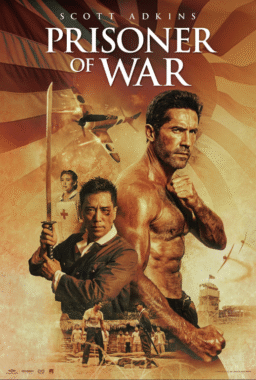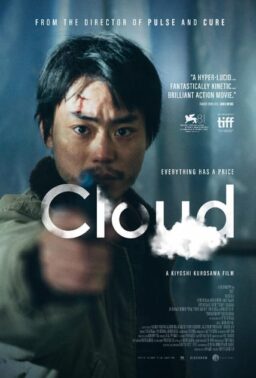I stopped playing sports of any kind at about age eight. I had asthma, I hated running, I didn’t like being in extreme heat or rain for a goal I didn’t understand, and most of all, I hated competition. Film always made more sense to me. You only had to watch what you wanted and there were a million ways to view any given work. Right around the end of high school something funny happened. I started making a list of all the films I thought I should see, the ones regarded as classics, or that kept cropping up in the magazines and books I was reading. The one constant were the films of almost inconceivable length. “Shoah,” “Heimat,” “Sátántangó,” “Berlin Alexanderplatz,” “Empire,” “Out 1,” and more exceeded five hours of viewing. What could possibly happen in such a runtime? Were these films simply elaborate dares? It seemed to me like they were competing with each other, and by extension with the viewers foolhardy enough to watch. Suddenly I found the kind of competition I liked.
In college I first dipped my toes in the absurd challenge of watching the longest movies ever when I found myself between a Kentucky Derby party happening in the house in which I lived, no car to drive anywhere, and the director’s cut of “1900.” I opted for the movie, the way I always do. The film nearly defeated me as it refused to end well past the point of having anything new to say about fascism or the direction of Italy’s intellectual radicals. Struck me that Pasolini, his teacher and friend, was dead and Bertolucci wanted us to know what Italy, and the world lost, every time someone like the great poet died. And maybe if the film never ended Bertolucci never had to return to a reality without him.
“La Luna,” his next film was two and a half hours and begins with the death of a father, which bore out my hypothesis. There was something about the length that felt like a plea. I watched the 13-hour “Berlin Alexanderplatz” a few weeks later, split over two days, and loved it. The length made sense. The novel Rainer Werner Fassbinder was adapting was baroque and intricate, and he had to convey with completeness the mindset of a German before Nazism crawled into his and every other German’s consciousness. There was also that it was nearly the last thing the enigmatic wreck directed before his death in 1982.
I’ve since watched too many films to count with epic lengths, several of them by Lav Diaz, and it’s rare that they earn their length. Diaz’s work is about wearing you down because he has chosen to make movies about the perpetually worn down. He gets us, or tries to, to see life as a pregnant Filipino woman would, screaming for better fortune and empathy from a cruel and empty world. When the six-hour “A Century of Birthing” ended I don’t know that I felt anything except the peculiar sensation that if I went outside I might find myself in the Philippines. A herculean duration is not to be abused, because at its best, a long movie, or even just a very long shot, can teach us to form a relationship with an image. Chantal Akerman’s three-hour “Jeanne Dielman, 23, Quai du Commerce, 1080 Bruxelles” teaches us to question the purpose of a camera, its placement in a room, its function as a capturing mechanism, and what it can teach us about ourselves. Jeanne Dielman, like nearly every Akerman film, tells an audience what the life of its female protagonist feels like. The monotony, the repetition, the silence, it’s still unlike any film about domestic femininity and objectification ever made, and part of that is its fearless patience.
I don’t usually have cause to sit and think about the relative productivity of runtime but for a fellow named Mariano Llinás. I haven’t seen his breakthrough, “Extraordinary Stories,” which runs a cool four hours, so had never thought about him or his work, until suddenly they were all I could think about. His new movie “La Flor” was playing New York Film Festival, and it was 14 hours long. Calum Marsh said it might be his new favorite film. I was intrigued. The competition returned. I had to sit through it all in one go, there was nothing else for it. But what kind of long movie was this to be? Llinás himself appears in the beginning to explain: six parts, four without endings, one without a beginning and one with everything. Each would star the actresses Elisa Carricajo, Valeria Correa, Pilar Gamboa and Laura Paredes, and each would be in a different genre. Alright, pal, game on.
The first part of six was no help in divining the film’s purpose or meaning. It’s a (perhaps purposely) shoddy b-movie, a story about a mummy’s vengeful spirit possessing an archeologist after she steals the old fossil’s eyes. The film is (perhaps purposely) a collection of hysterical actions, from the long and busy conversations caught in minutes-long steadicam shots, the frequently howled dialogue, the preponderance of murderous cats and the red glowing eyes of the mummy. I thought it wouldn’t have been such a bad VOD horror movie if it’d cut about thirty minutes off the hour and forty minute runtime. It felt self-indulgent for such a (perhaps purposely) slight genre movie. Part 2 muddied things even further. A couple going through a terrible break-up have to reunite to write and record a new album. Their early recordings, when they were together, were massive hits, and now their songs are loaded with bitter, barbed portent. A mutual friend of theirs hears both sides of their story, but she’s not without ulterior motives. She’s in deep with a strange scorpion-worshipping cult with nefarious designs on the songwriting duo. Just what they plan is never divined because the film ends right when everyone’s about to confront each other.
Part three is many hours itself and concerns rival spies and their shared mission to kidnap a rocket scientist. It’s a parody of spy movies but finds time for grace in its empathetic look into each member of the team’s outlook on life and the violence that brought them together. This film ending before it’s reached its conclusion is less a problem as it’s quite plainly just about the puppet strings pulled by fate and the little left to us to contemplate. The fourth part is perhaps the most successful, following the crew of the movie we’re watching as they try to create the segment we’re watching. It goes haywire as Llinás get obsessed by filming Trumpet Trees and then he and his crew are in some kind of accident that drives them all mad. A paranormal investigator is dispatched to deal with the aftermath of their calamity. The fifth part is a silent remake of Jean Renoir’s “A Day In the Country.” The sixth part is shot like a series of tintypes, a telling of the struggle of four indigenous women. Then there are 40 minutes of end credits over an upside shot of the crew cleaning up after the last shot.

There are long movies and there are long movies. Llinás it seems, is just as competitive as I am because there is, quite frankly, no reason this film had to be 808 minutes long. He did it because he could, because how many 13-and-a-half-hour movies are there in a calendar year? Very few, and this film reminds us, there’s good reason. He shows up in the middle of the third episode to tell us there are three and a half hours left in the chapter. To put it bluntly, he’s fucking with us. When it was revealed in hour … ten? Maybe? that I would be watching a pointlessly silent remake of one of the most perfect films ever made, I almost threw my shoe at the television. Part of the problem is that Llinás, in his hubris, imagined that he could dictate how the film would be consumed. He put in a dozen intermissions and requested it be broken up at such and such a place. That’s all well and good but when a movie is done it’s out of your hands. It’s not a symphony that has to be conducted at a certain speed, it’s a movie that will some day wind up on streaming services, likely watched in half-hour chunks like it’s “Fuller House.” I watched it all in one day and this movie is not designed to be watched in one day. If anyone involved in programming or making it had done what I did they would never have made this film this long because it has no rhythmic coherence. And if a film cannot be watched whole it cannot be watched at all.
The various extravagances of “La Flor” could be pardoned or loved in smaller doses, but recommending a day of one’s life for an hour of reward seems like just as much a trolling as popping up to tell your audience how much longer they have before they then have five more hours left of a movie. Which is not to say I only enjoyed an hour of the movie, but I’d say in the context of each passage, there were sections that made each chapter worth watching (except perhaps in the unconscionably dull second part). “The Day In the Country” remake is basically numbing and pointless, especially since I’d been on a couch for an entire day before it began, except that near the end a section of audio from the original film appears on the soundtrack and Llinás starts filming single propeller planes in flight, dancing with each other in the sky like synchronized swimmers and I’m struck dumb. In that moment it’s the most beautiful thing I’ve ever seen, I want to cry. Has the whole enterprise been worthwhile? A director with some idea of the shape of his opus would stop now but on we go to a superficially beautiful but deathly boring text-driven final act. Llinás does not know what he’s done, does not know what the competitive cinephile will have done when he’s heard there’s a 14-hour movie calling to him from the annals of history … or at the very least the wikipedia entry on the longest films ever made.
The thing that galls me still, weeks after I’ve seen it, when I’ve successfully reduced it in my memory to the best parts–the side-splitting Monty Python-esque digression about trees, the planes cutting across the grey sky–is that it’s patently selfish to ask anybody to spend more than a day watching a movie. I was not transported, I was not let in on the secrets of its creator, I was not told about the mindset of the average anybody. I did learn a few important things: “La Flor,” I truly believe, cannot be called a film. It is six films and a middle finger of a credits sequence, stitched together like the “Bride of Re-Animator” for the purpose of making a raving fool out of me, the viewer who took his intentions at face value. Some of these movies are better than others, but none of them justifies the other, and no single element justified my spending 13 and a half hours watching this. I look back on those moments of transcendence, where Llinás gets out of his own way, stops taunting me, and lets the movie be a movie, and wonder if they’d have been as remarkable in a standalone 90-minute work.
I watched “La Flor” because “La Flor” dared me to watch it, and I have never shrunk from such a thing yet. This is what competition brings out in me and now I’m stuck with the secrets only a full day of movie can hold. A lifetime has passed since I scowled my way through soccer matches, praying to be taken off the field, and I haven’t learned a thing. If nothing else, “La Flor” taught me that. A terrible price for a terrible truth, but the planes were lovely.












